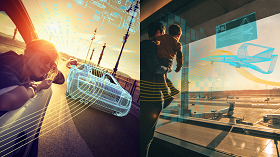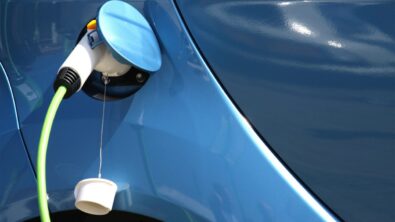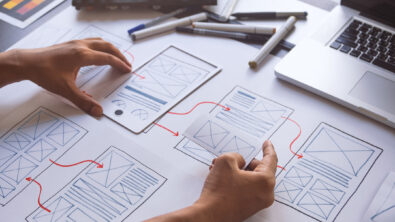Digital twin technology’s synergies in aerospace, automotive

The aerospace and automotive industries share a great deal in common, especially when it comes to leveraging the value of digital twin technology: In fact, some have suggested that aerospace and automotive might merge in the future to develop a flying car and driving airplane. However, we aren’t there quite yet.
Still, the fact remains in the age of the emerging Digital Enterprise, these industries face a number of shared challenges and synergies, including system safety and reliability, verification management, flexible manufacturing, robotics/factory automation, design for production cost and design for maintainability.
These issues were discussed in a presentation entitled, “What synergies exist between the automotive and aerospace industries that the Digital Twin weaves together?” given by Siemens PLM Software’s Dave Riemer, vice president of aerospace and defense strategy, and Greg Roth, director of automotive and transportation, at the recent Digital Twin Summit at the Digital Manufacturing and Design Innovation Institute in Chicago, Illinois.
Some of Roth and Riemer’s observations included how:
• Aircraft can be in service for decades. In fact, by the time the B-52 is retired, it will have been in service for 90 years. Since you can’t go and find the original designer to ask about the reason behind the design, it is important to not only have the digital twin, which tells you what something is, but to also have the digital thread, which weaves together the long-term cycle and answers the question why it is the way it is.
• Traditionally, the automotive industry didn’t have as stringent a requirement for system development as aerospace, which pioneered that area because of the safety requirements for risk assessments. If you got stuck on the side of the road, you could call AAA or limp home. But as we enter the autonomous vehicle era, this is causing the auto industry to rethink its strategies. At the outset of this era and perhaps for much longer, dependability and safety will need to trump the previous most pressing concern: time-to-market.
• Aerospace has always been a highly regulated industry, whether it involves government contracts, commercial aircraft or getting certified by the Federal Aviation Administration (FAA). With the advent of self-driving cars, it is likely the automobile industry will face increased scrutiny from the government. The digital twin will be crucial for showing how the automobile’s safety processes were tested and verified
• The digital thread provides a structure not only for the engineering department, but for the entire organization. For instance, if purchasing buys a slightly less expensive product with different requirements that can change product performance and cause warranty issues and problems in the field. So the digital thread and the digital twin really help the entire organization understand where and why problems arise.
We hope you enjoy this video.
Keep an eye on this blog in the coming weeks as we provide links to other summit talks.
About the author
Indrakanti “Chaks” Chakravarthy is the Marketing Programs Director working in the Americas zone at Siemens PLM Software, where he is responsible for marketing programs covering the aerospace, defense, federal and marine industries. Chaks has spent the last 30 years working for a number of companies in presales technical, sales and marketing areas of the PLM portfolio in India, Japan and the United States. He has a mechanical engineering degree from Jawaharlal Nehru Technological University in India.


